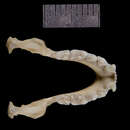en
names in breadcrumbs


In recent years, it has been found that Great fruit-eating bats sometimes experience Alopecia, a syndrome that can cause hair loss. Populations of Great fruit-eating bats in Tabasco, Mexico had a high prevalence of Alopecia. It is not yet known whether diet or hormones are the cause for the syndrome, but more research is being conducted.
Great fruit-eating bats, like many other bats, use echolocation for orientation and locating food. Echolocation is the process of emitting sound waves and then analyzing the returning echoes to determine food location and nearby obstacles. Great fruit-eating bats are unique as they use scent in conjunction with echolocation to locate fruit. Little information is known about the specific calls of the great fruit-eating bats, but information about the calls of New World leaf-nosed bats, and relatives the, Jamaican fruit-eating bats is available. Bats differ in intensity and frequency of their calls depending on their diet and environment.
Communication Channels: acoustic ; chemical
Perception Channels: tactile ; ultrasound ; echolocation ; chemical
There are no known threats to the population of this species. Great fruit-eating bats are listed as Least Concern on the IUCN Red List.
US Federal List: no special status
CITES: no special status
State of Michigan List: no special status
Little information is available about any negative impacts of this species to humans.
Great fruit-eating bats are one of the fruit-eating bat species that plays a significant role in the seed dispersal of plants in forests as well as in urban areas. Although this economic benefit is difficult to quantify.
Great fruit-eating bats play a significant role in the ecosystem. Being a frugivore, the bats disperse seeds from fruit in their fecal matter. However, more research is needed to fully understand the plant species that make up the diet of great fruit-eating bats, in order to pinpoint the specific species of seeds they disperse. Great fruit-eating bats may also serve as a host for parasitic bat flies and mites.
Ecosystem Impact: disperses seeds
Commensal/Parasitic Species:
Great fruit-eating bat are frugivores; their diet consist of mainly fruits but they feed on nectar. Great fruit-eating bats demonstrates a group-foraging behavior, where scouts are assigned to locate a tree with fruit and then "report" back to the harem. The harem will later follow the scouts to the tree location for feeding. Great fruit-eating bats remove fruit from trees and take it back to a feeding area. The bats will fly around the fruit, take a bite, and perform a twisting movement to remove the fruit from the tree. Great fruit-eating bats will feed on fruit from several trees, switching from up to 2 to 5 fruit trees in one night.
Plant Foods: fruit; nectar
Primary Diet: herbivore (Frugivore , Nectarivore )
Great fruit-eating bats (Artibeus lituratus) range from Mexico to Southern Brazil.
Biogeographic Regions: neotropical (Native )
Great fruit-eating bats are mostly tree dwelling, roosting in tree cavities or on branches. Great fruit-eating bats have dispersed to urban areas, however, where they may roost in buildings. Great fruit-eating bats will roost above ground from 2.7 to 28 m in tree canopies and also inhabit caves.
Range elevation: 2.7 to 28 m.
Habitat Regions: tropical ; terrestrial
Terrestrial Biomes: forest
Other Habitat Features: urban ; caves
Information is not yet available about the lifespan of great fruit-eating bats in the wild or in captivity.
Great fruit-eating bats belong to the family Phyllostomidae, a family of "leaf-nosed bats", who have a "horn" projection from the nose. Great fruit-eating bats are one of the largest fruit eating canopy bats, with a long wingspan used to travel long distances in search of fruit among the canopies and trees. Great fruit-eating bats have an average body mass of 65.9 g, body width of 4.5 mm, and a single wing length of 23.0 mm. These bats have light to dark brown fur.
Average mass: 65.9 g.
Average wingspan: 23.0 mm.
Other Physical Features: endothermic ; bilateral symmetry
Great fruit-eating bats are thought to have developed harems as a social structure and to help protect against predation, with one male to every few females. Great fruit-eating bats are known to fall prey to birds, such as owls.
Known Predators:
Anti-predator Adaptations: cryptic
Great fruit-eating bats are polygamous, with groups called harems consisting of one male and several females.
Mating System: polygynous
More research needed to fully understand the reproductive behavior and patterns of great fruit-eating bats. Great fruit-eating bats vary reproductive patterns regionally. In northern neotropical regions, reproductive patterns are monoestrous, while in southern regions seasonal bimodal polyestry (two reproduction peaks annually during the wet season) is observed. The first peak occurs between June to October and the second from October to March. Some hypothesize that rainfall may also play a role in the reproductive patterns of great fruit-eating bats.
Breeding interval: Great fruit-eating bats reproduce twice annually in southern regions and once annually in northern regions.
Range number of offspring: 1 to 2.
Key Reproductive Features: iteroparous ; seasonal breeding ; gonochoric/gonochoristic/dioecious (sexes separate); sexual ; viviparous
Little information is available about the parental investment involved in caring for the young of great fruit-eating bats.
Parental Investment: pre-fertilization (Protecting: Female); pre-hatching/birth (Provisioning: Female)